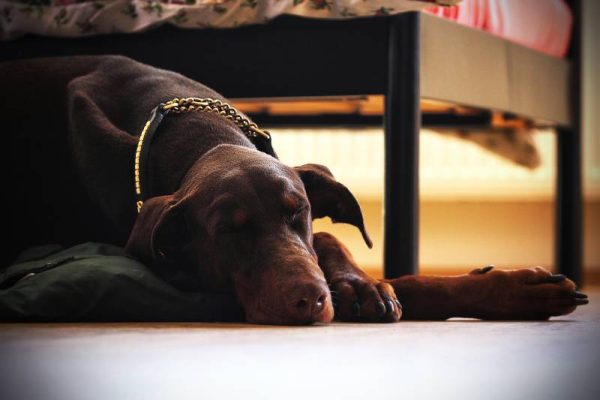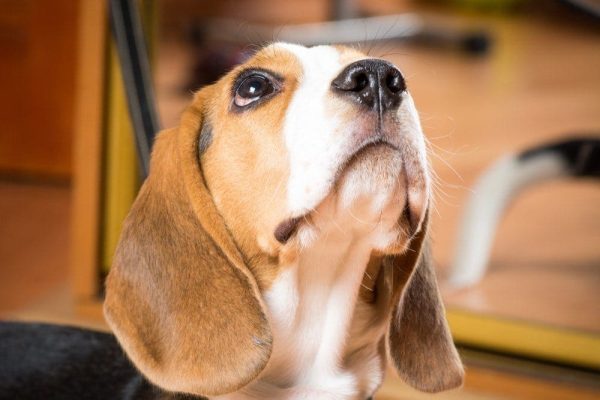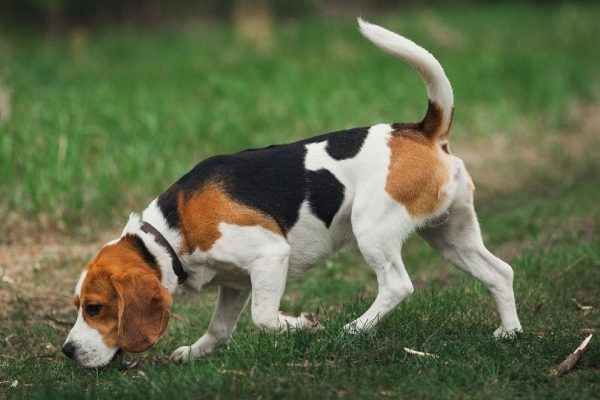Is your water-loving pup ready for their next challenge? When swimming becomes a little too ho-hum, your dog may be an excellent candidate for surfing lessons! Hitting the water and showing your dog how to hang ten may sound like a pipe dream, but training can be surprisingly straightforward for a novice.
You can follow these tips and instructions to teach your dog to surf, and you’ll have them hitting bombs and turning heads at the beach in no time!

The 4 Steps on How to Teach Your Dog to Surf
Before bringing your dog out on the water, you must determine how fit they are for the sport and how interested they seem. Generally, small breeds like Shih Tzus, Pugs, and Chihuahuas are less suited to surfing activities. Meanwhile, water dogs have the ideal mix of athleticism, trainability, confidence, and affinity for swimming to excel. Dogs with prior health conditions, especially mobility problems or seizure disorders, are absolutely not suited to surfing.
Still, every dog is different, so you don’t have to feel limited if your dog doesn’t quite fit the mold. Nearly any dog can learn to surf if they love water and a training challenge.

1. Introduce Your Dog to the Board
Starting your dog on a surfboard is like training anything else. You create a positive association with the move you need them to perform (i.e., get on the board) in a low-stress, low-distraction environment and build from there.
Begin training in your house by laying the surfboard on the floor and showing your dog how to get on. Develop a positive association with getting on the board by luring your dog with a treat or a favorite toy. Lure them around the back to orient them in the proper direction and position them near the board’s rear.
Once they get all four paws on the board where you want them (close to the back, with the tail above the fins), mark it and offer the reward. After several rounds of doing this, your dog should be comfortable getting on and positioning themselves appropriately. Eventually, you can phase the treats out.
2. Train Your Dog to Stay on the Surfboard
When your dog is happy to get on the surfboard, you can train them to stay on it. Get them into position on the surfboard, and issue your “stay” command. Back away from them, and give them praise and treats for staying.
Do this from multiple angles, including behind your dog, as this is the position where you’ll launch them in the water. Your dog should be at ease staying on the board.
They’ll be continuously looking and angling their bodies forward on the water, so they must be unafraid to let you go out of sight behind them.

3. Transition to the Water
With your dog’s board skills fine-tuned on dry land, it’s time to put the new skills into practice at the beach. Before you can hit the waves, you must develop your dog’s balance in water in a calm, shallow area.
You could also start at home with a shallow pool or elevate the board on two stacks of pillows to simulate the water’s rocking movement.
Add Motion to the Surfboard
Have your dog get onto the board while you hold it steady. Do not attach the surf leash to your dog’s leg. When they’re in position, gently rock the board to acclimate your dog to the movement and provide treats for them to stay calm and stationary.
Gradually intensify the movement while staying within your dog’s comfort level. If they lose their balance and tumble into the water, make it a positive experience. Offer praise and treats so they don’t stress or become fearful of falling off.
Once your dog is used to the natural motion of the waves under the surfboard, you can try pushing them forward and backward through the water.
4. Let Your Dog Surf
When your dog is used to the water’s movement under the board, you can take them out to surf. Position yourself at the surfboard’s tail and guide your dog into the water, stabilizing the board as you go against the incoming waves. Push the tail down to lift the nose as you come up on waves to let the board glide over it.
Always ensure the nose is either pointing toward land or away from it. The surfboard should never be parallel to the beach. Once you’re at a comfortable distance, orient the nose toward land and wait for the right wave.
Stick to the most shallow waves. As the wave approaches, launch the board with it to let the water carry your dog to shore. Press gently on the tail as you launch to keep the surfboard and your dog from nosediving.


What Gear Do I Need to Surfboard With My Dog?
The only essential gear you’ll need to teach your dog to surf is a life jacket, high-quality treats, and, of course, a surfboard!
For safety, a life jacket is always a wise idea, even if your dog is a capable swimmer. It’s natural for dogs to be at least a little anxious in a life jacket and may resist having it on. As with training your dog to get on the surfboard, you may need to create positive associations with the vest.
You can introduce your dog to the life jacket by giving them treats and praise. Show it to them first, then slowly transition to placing it on their body and strapping it, all while rewarding them for being calm.
What’s the Best Type of Surfboard for Dogs?
The best surfboards for dogs are soft tops because they allow their claws to dig in and provide grip. Even with wax, hard tops are too slick for most dogs, especially when they’re learning. Ideally, the board will have a decent rocker to make it easier for your dog to ride with the board’s nose up.
Size the board according to your dog’s body. Smaller dogs can get away with shredding on a boogie board, while medium and large dogs can ride surfboards measuring 6–8 feet. When you move to tandem riding, an 11-footer will give you and your dog the perfect amount of space.


The 4 Tips for Successfully Surfing With Your Dog
Getting your dog into the water can take several weeks or months of work, depending on their level of training and confidence with new activities. Though you’ll undoubtedly encounter a few hiccups, you can give your dog the best chance of early success with these tips.
1. Make Sure Your Dog Is Comfortable With the Water
Surfing shouldn’t be part of your dog’s first foray into the water. You must ensure your dog enjoys being in the ocean and is comfortable swimming, navigating waves, and splashing around. If they aren’t, no amount of training will prepare them for the stress of being on a floating surfboard.
Before training your dog to surf, play with them at the beach and acclimatize them to the water. Throw a tennis ball into the water for them to retrieve or guide them as they swim about. Provide praise and rewards to make it a positive experience and develop your dog’s enthusiasm for the ocean.
2. Monitor Your Dog’s Body Language
When teaching your dog to surf, make sure they are enjoying themselves. After all, why would you take them surfing if they don’t like it? Watching their body language will give you insight into their feelings about the activity.
- Wiggly body
- Tail wagging rapidly
- Relaxed posture
- Relaxed grin
- Lip licking
- Tense body
- Tail down or between their legs
- Seeing the whites of their eyes

3. Work on Obedience
Getting your dog to get on and stay on the surfboard in a quiet, controlled setting is far easier than doing so at the beach. From other dogs playing to the crashing sounds of surf and the calls of gulls, a million distractions exist at the beach that can quickly throw your dog off their game.
Work on obedience amid distractions to build your dog’s tolerance for the unexpected and focus on the activity. Play fetch with another dog, run around and play, and create other distracting stimuli that might get your dog off their surfboard.
Then, reward them when they stay relaxed and in position. Building your dog’s obedience to an appropriate point can take several weeks, so stay patient and keep working!
4. Be Conscious of the Surf Conditions and Hazards
Acquaint yourself with appropriate surfing spots before bringing your dog. Dog beaches are ideal, as they let you take your dog off-leash. Generally, you want minimal crowds to reduce distractions and chances for poor interactions.
Always check the conditions the day you plan to surf. Be aware of hazards like riptides and sting rays while working in the water, and ensure your dog has a properly sized floatation device to keep them safe when they wipe out.

Final Thoughts
Staying patient and letting your pet dictate the process is the basis of teaching your dog to surf. It’s best to move at their pace to keep the activity enjoyable and exciting. If they don’t show a fondness for the sport, don’t pressure them.
Although you may love to surf, your dog may prefer dry land, and that’s okay! Go slow, have fun, and pay attention to how your dog responds to ensure they get the most from the experience.
Featured Image Credit: Masarik, Shutterstock




















